
A replica of the Matthew was sailed across the ocean in 1997 to re-create and commemorate that fateful voyage. At the time, it toured the island, putting in at various ports, and people flocked to the water to watch it arrive. A second replica is now housed in Bonavista Harbour for anyone who would like to see it next to the facility in which it was built.


However, on this trip, our time was unfortunately limited, and we didn’t get to explore the town. Instead, we drove straight out to the lighthouse and had a picnic lunch overlooking scenic Bonavista Bay. There were a number of fishing boats cruising back and forth, chased by gulls hoping to steal a portion of their catch, as this was the food fishery weekend. We could guess at how successful the trip had been by the number of gulls screaming at each boat.
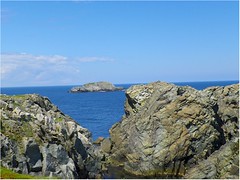
Lunch over, we walked up to the lighthouse and took some pictures of it. Below is a picture that I took (on a previous trip, actually, but I still like the way it came out), and I’ve made it into a series of Newfoundland souvenirs entitled, “Newfoundland, Canada: A Colourful Place.” The bright red, white, blue, and green reminded me of the colourful character and expressions of our province, and it just seemed like a good fit.
What I hadn’t discovered there before was that across from the lighthouse was a gate. Going through that gate, led you out to a rocky point, covered in low vegetation. What fascinated me more, however, was that this point overlooked a sea stack that housed a colony of puffins and other sea birds. So we stayed for a while, watching the puffins go about their business and listening to the sound they made, almost like a dirt bike starting up, and often compared to a chain saw. I was quite confused as to why I was hearing a dirt bike on a small sea stack at the end of a remote cape until I finally realized it was the birds. (Can't you just picture one of these little guys with a helmet on revving his bike, though?) You can hear a sound bite of a puffin’s call here: http://www.allaboutbirds.org/guide/Atlantic_Puffin/sounds.
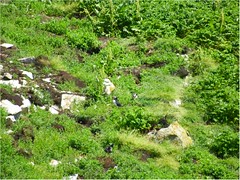
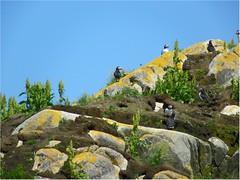
Around the area were more rocks and mini islands, and the waters in between were stunning shades of blue and deep green. The colours were so amazing, I hated to look away. There was a very peaceful, serene, feeling to the scene. In another direction, my friend pointed to a place on the cliff where it looked as though one small rock was holding up a large piece of the face of the cliff. It reminded me of how we all play a part in supporting each other, and no matter how small, we can all make a difference.

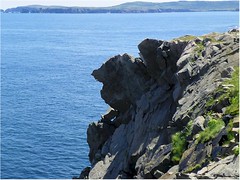
Along the lane back to the parking lot, I was taken by a small shed in a rocky barren area, surrounded by a worn and weathered fence. The fence was made by bending flexible sticks and weaving them together, a skill that is not often practiced now, but shows the ingenuity and resourcefulness of the people who settled this rugged land hundreds of years before.
Leaving the lighthouse area, we travelled a short distance to where a dirt road turned off from the lighthouse road to the Dungeon Provincial Park - a spectacular site where sea caves collapsed leaving just two tunnels in the rock leading from the ocean into the clear, still water of the crater. The shoreline of the area is littered with sea stacks, more evidence of the power of nature to wear away even the very rocks on which we rely. This spot is a wonderful place for kayakers to explore and tourists to visit. As if to punctuate that observation, as we drove back out, we saw someone in a kayak making his way past a small group of sheep grazing on the land high above.



Back in town, we stopped for an ice cream cone, as it was a beautiful, hot day, and then headed out towards Elliston, the Root Cellar Capital of the World. Sadly, I didn’t have the opportunity to look for any of the famous root cellars, as I was on the hunt for the “Neck,” one of the closest places on land to view puffins in North America. After a brief detour, which fortunately took us to the visitor centre where a helpful, friendly guide put us back on track, we found the spot to park the car and walk out. Luckily, I didn’t know beforehand that the “Neck” meant a narrow strip of land a couple of feet wide and hundreds of feet above the water with just one small rail on one side to provide a slight sense of security. However, we got over it (and back) safely, and soon heard the birds just as the island came into sight.

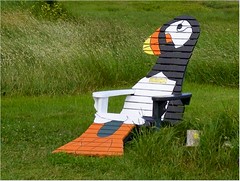

Puffins actually live on land for only a very short period of time. They spend most of their lives at sea, coming to land only to lay their one egg per year and raise their young, and about 95% of North America‘s Atlantic Puffins breed along Newfoundland‘s coastline. The colonies are littered with burrows dug into the side of the cliff, hundreds or thousands clustered closely together. Puffins are very loyal birds with tremendous memories, as they not only mate for life, but will fly far away for the winter and then the next spring return not only to the same rock, but to the exact same burrow. They are, however, very poor flyers, just skimming along the water scooping up fish to bring back to their family, and actually swim better than they fly. Sharing the island with them, however, are also herring gulls, which in comparison create a beautiful and peaceful picture as they glide through the air, watching for a chance to steal a puffin’s hard-earned catch.
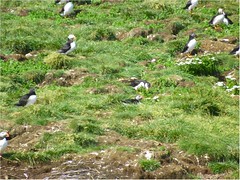



I also took this video of the puffins to capture a sense of the motion and activity of the little island and the proximity of the rock to the land. Puffins would frequently fly right over our heads on their way to their hunt.
Finally, it was time to head back to Trinity, as we still had a couple more stops along the way, and a play to see that night. But those will be future blog posts, so please come back soon.

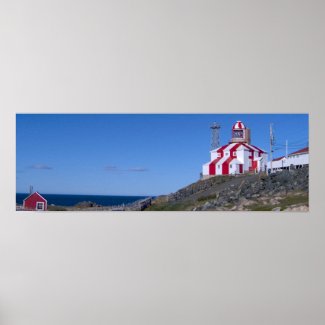
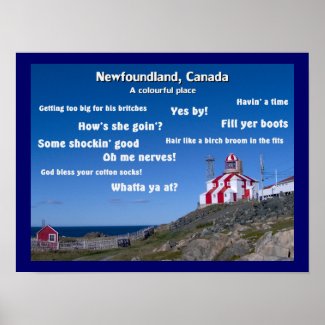

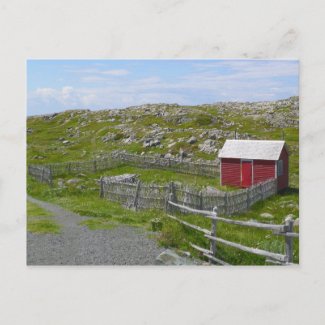
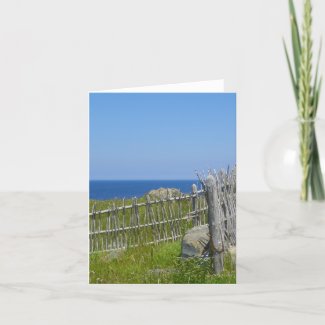
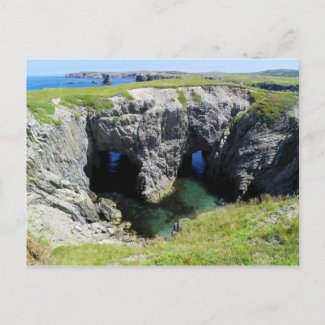


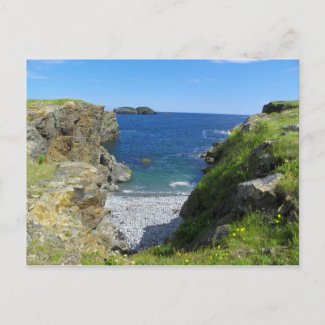
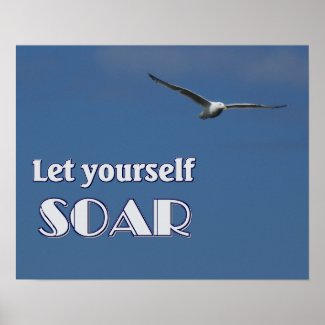
No comments:
Post a Comment
Please share your comments on this post or your interest in Newfoundland